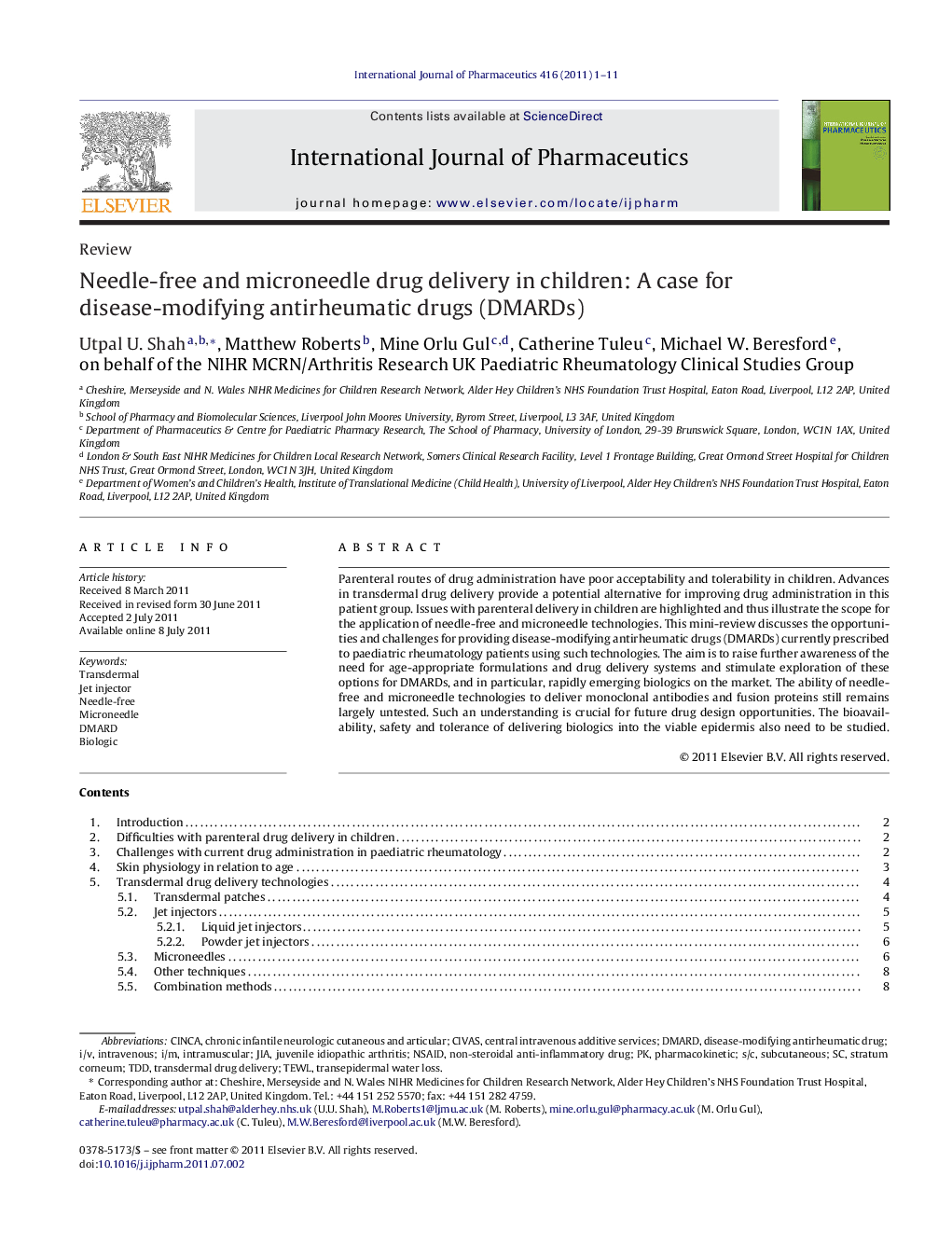| کد مقاله | کد نشریه | سال انتشار | مقاله انگلیسی | نسخه تمام متن |
|---|---|---|---|---|
| 2503453 | 1557426 | 2011 | 11 صفحه PDF | دانلود رایگان |

Parenteral routes of drug administration have poor acceptability and tolerability in children. Advances in transdermal drug delivery provide a potential alternative for improving drug administration in this patient group. Issues with parenteral delivery in children are highlighted and thus illustrate the scope for the application of needle-free and microneedle technologies. This mini-review discusses the opportunities and challenges for providing disease-modifying antirheumatic drugs (DMARDs) currently prescribed to paediatric rheumatology patients using such technologies. The aim is to raise further awareness of the need for age-appropriate formulations and drug delivery systems and stimulate exploration of these options for DMARDs, and in particular, rapidly emerging biologics on the market. The ability of needle-free and microneedle technologies to deliver monoclonal antibodies and fusion proteins still remains largely untested. Such an understanding is crucial for future drug design opportunities. The bioavailability, safety and tolerance of delivering biologics into the viable epidermis also need to be studied.
Figure optionsDownload as PowerPoint slide
Journal: International Journal of Pharmaceutics - Volume 416, Issue 1, 15 September 2011, Pages 1–11